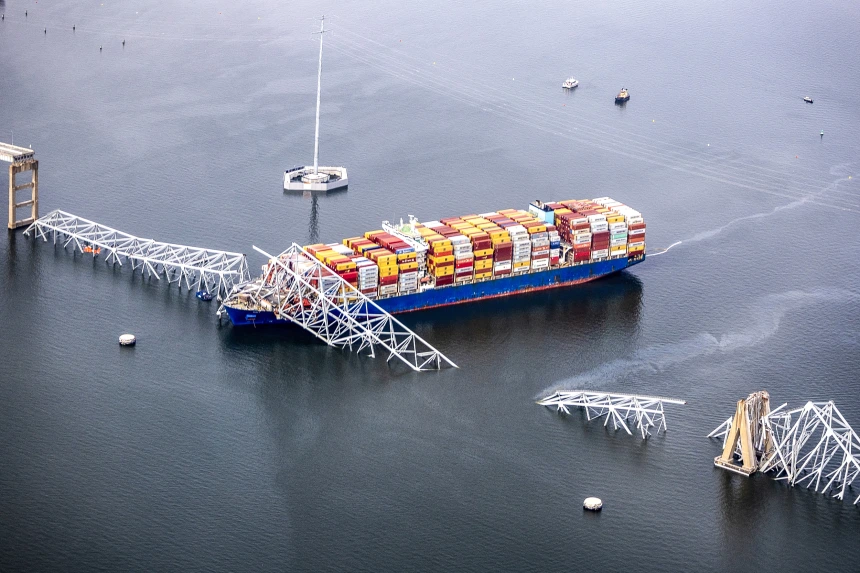Commercial Fleet Management: Strategies, Tools & Tips
Commercial fleet management plays a vital role in keeping businesses running smoothly, especially in industries like transportation, logistics, and...
Keep an eye on the road
Simplify your driver's routine
For efficient decision making
Ensure the compliance of your fleet
Simplify the daily life of your drivers
Maximize the value of your data
Unparalleled monitoring of your assets
The friendly competition that pays off
Planning powered by data
Exceed your customers' expectations
Provide better service to your users
Maximize the satisfaction of your citizens
Simplify your daily life on the construction site
Facilitate the electrification of your fleet
Our experts meet your needs
Easily meet the standards
Improve the safety of your drivers
Protect your data and your fleet
4 min read
Roxane Loiseau
Mar 27, 2024 2:19:16 PM

Mont-Saint-Hilaire, QC, March 27 2024 -
On March 26th, the Canadian trucking industry faced a sudden and significant challenge as news broke of the Francis Scott Key Bridge collapse in Baltimore. This vital artery, crucial for goods movement from the bustling Port of Baltimore to destinations across North America, including the extensive reaches of Canada's east coast, met a catastrophic fate. The immediate repercussions and the long-term impacts on operations, logistics, and costs have become pivotal concerns for Canadian fleet managers and operators. This article delves into these facets, exploring detour options, technological aids, and strategic shifts necessary to navigate this unexpected obstacle.
Immediate Operational Impacts and Detour Necessities
For fleets accustomed to the direct routes facilitated by the Baltimore Bridge, alternative paths must now be charted. Interstate detours, such as utilizing I-81 or I-83 to I-70, present longer yet viable routes, though they promise increased travel distances and potential congestion, especially near urban centers or alternative ports. Local Maryland routes offer shorter detours but may not accommodate heavy truck traffic efficiently, leading to slower speeds and potential logistical bottlenecks.
Impacts on Rest Areas and Parking: The shift in truck flows to alternative routes will likely strain truck-specific rest areas and parking facilities, complicating drivers' compliance with Hours of Service regulations and impacting their well-being on the road.
The Economic Burden of Detours
Understanding the Financial and Operational Impact
Increased Operational Costs: The shift to detour routes invariably introduces additional miles to journeys. Considering the average operating cost of $2.00 per mile for a big rig, these detours significantly inflate expenses. With fuel prices averaging around $4.00 USD per gallon, the extended miles lead to higher fuel consumption, directly impacting operational costs.
For instance, detouring an additional 200 miles on a route, given a truck's fuel efficiency of 7 mpg, translates to approximately $ 114.29 USD in added fuel costs alone. When accounting for the total operational cost, this detour could feasibly add upwards of $400 to the trip, considering the extra fuel, maintenance, driver wages, and tolls associated with the longer journey.
Congestion and Delays
The rerouting of traffic to alternative corridors is likely to strain truck stop parking availability, particularly along less common detour routes. This could pose significant challenges for driver rest periods and compliance with Hours of Service regulations, affecting driver safety and well-being.
Impact on Truck Stop Parking
La réorientation du trafic vers des couloirs alternatifs est susceptible de mettre à rude épreuve la disponibilité du stationnement des arrêts de camions, en particulier le long des routes de détour moins courantes. Cela pourrait poser des défis significatifs pour les périodes de repos des conducteurs et la conformité avec les réglementations sur les heures de service, affectant la sécurité et le bien-être des conducteurs.
Technological Intervention: The Role of Trucking Technology and Telematics
In this era of uncertainty, technology emerges as a beacon of efficiency. Advanced logistics and fleet management software become indispensable tools for optimizing routes in real-time, mitigating delays, and managing the increased costs of detours. Telematics can provide fleet managers with vital data on vehicle location, fuel consumption, and driving patterns, facilitating informed decision-making and enhancing communication with clients about expected delays.
Adjustments in scheduling and strategic route planning are necessary to mitigate the impact of the bridge collapse on delivery timelines and operational costs.
Fleets utilizing CoPilot Navigation on our AttriX Driver Terminals with Active Traffic can rest assured that their fleets will be automatically re-routed around the disruption. This sophisticated navigation system, designed specifically for the trucking industry, continuously monitors road conditions and traffic data in real-time. When obstacles such as the bridge collapse occur, CoPilot's Active Traffic feature dynamically adjusts routes to ensure drivers are directed away from congested areas or closed roads, minimizing delays and maintaining efficient operations.
Moreover, leveraging tools like PC Miler is crucial during these times. PC Miler provides comprehensive road and truck-specific mapping, including restrictions and toll costs, allowing for precise operational planning and cost management. Together, CoPilot Navigation and PC Miler offer a robust solution for navigating through disruptions, ensuring that fleet operations remain as seamless as possible. These tools not only assist in immediate re-routing needs but also support strategic planning and analysis, reinforcing the resilience of the Canadian trucking industry in the face of infrastructure challenges.
Exploring Alternative Ports
The redirection of logistical traffic to alternative ports such as Philadelphia, Norfolk, or New York and New Jersey necessitates a strategic review of logistics operations. Each alternative comes with its unique set of challenges, from increased distance and congestion to potential delays in processing and higher costs. Canadian fleet operators must weigh these factors, considering the impacts on schedules, operational costs, and service commitments.
Strategic Measures for Fleet Managers
To minimize the operational impacts of the Baltimore Bridge collapse, fleet managers are advised to:
Supply Chain Vulnerability: The Automotive Industry in Focus
Amidst the sectors navigating through the upheaval, the automotive industry stands out for its susceptibility to disruption. The just-in-time manufacturing model, reliant on the timely delivery of components, faces significant strain, underscoring the intricate link between transportation infrastructure and supply chain continuity.
Looking Ahead: Building Resilience
The collapse of the Baltimore Bridge serves as a stark reminder of the fragility of our interconnected supply chains and the critical role of robust infrastructure. For Canadian fleet managers and operators, the incident underscores the necessity of agility in operations, the adoption of advanced technologies for logistics optimization, and the importance of strategic planning to withstand the unforeseen challenges of tomorrow.
In conclusion, while the immediate task is to navigate the logistical labyrinth presented by the bridge's collapse, the long-term goal must focus on enhancing the resilience of the Canadian trucking industry against future disruptions. Through strategic adaptation, technological integration, and proactive planning, the industry can aim to maintain continuity and reliability in the face of infrastructure challenges, safeguarding its pivotal role in the North American supply chain ecosystem.
Written collaboratively by Anthony Mainville and Rejean Fontaine:
Anthony Mainville: Founder President of AttriX Technologies Inc and co-president of the zero-emission trucking community, is a pillar in the field of telematics and transport technologies, with nearly two decades of experience. A speaker and enthusiast of the transport universe, Anthony has dedicated his career to the advancement and technological innovation within the trucking industry. His vision and commitment to a zero-emission future demonstrate his leadership role in the sector's ecological transition. His ability to share his knowledge and inspire the industry makes him an influential and respected voice among his peers.
Réjean Fontaine: Known for his past as a heavy-duty truck driver on the East Coast for several years, Réjean transitioned to managing logistics operations for Transport Grayson, a fleet of over a hundred pieces of equipment operating across North America, with a particular focus on the East Coast. His intimate knowledge of logistics and transport, combined with his unique driver's perspective, gives him a deep understanding of the challenges and dynamics of the sector. Currently, he specializes in Transport Safety and Compliance at AttriX, affirming his commitment to excellence in the transport industry.

Commercial fleet management plays a vital role in keeping businesses running smoothly, especially in industries like transportation, logistics, and...

In fleet management, fleet compliance services play a much bigger role than just checking a box. They’re about keeping your drivers safe, your...

Trucking has always come with its fair share of challenges, from road safety and liability issues to managing fleet efficiency. As the industry...